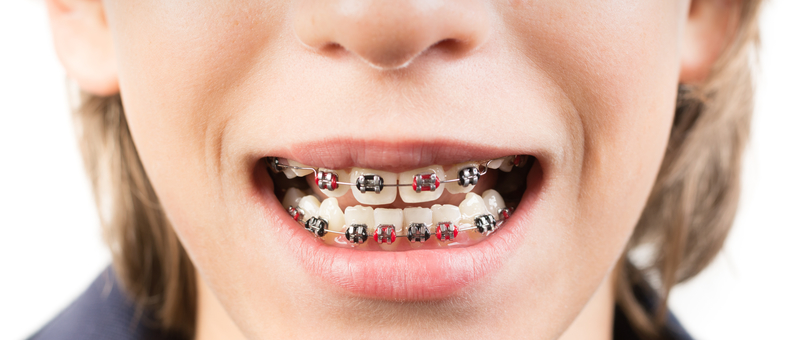The Importance of Orthodontic Health
Orthodontic health plays a vital role in overall well-being, impacting everything from our smiles to our ability to chew and speak effectively. Orthodontic issues can lead to problems like misaligned teeth, jaw pain, and even difficulties in maintaining proper oral hygiene. Understanding and addressing these issues not only improves aesthetic appearance but also enhances oral functionality and health.
Understanding Common Orthodontic Issues
Crowding
Crowding occurs when there isn’t enough space in the mouth for all the teeth to fit properly. This can result from genetics, early loss of baby teeth, or irregular tooth size. Crowded teeth can make it difficult to brush and floss effectively, increasing the risk of cavities and gum disease.
Spacing
Spacing issues involve gaps between the teeth. These gaps can be caused by missing teeth, abnormal tooth growth, or a mismatch between the size of the jaw and teeth. Spacing can lead to issues with chewing and speech and can also affect the appearance of the smile.
Overbite
An overbite, where the upper front teeth overlap the lower front teeth excessively, can be caused by genetics, childhood habits like thumb sucking, or excessive jaw growth. Overbites can lead to jaw pain, worn teeth, and difficulty in chewing.
Underbite
An underbite occurs when the lower front teeth protrude beyond the upper front teeth. This condition can cause difficulties with chewing, speaking, and even breathing. It may be a result of genetics or disproportionate jaw sizes.
Crossbite
A crossbite is characterized by some upper teeth sitting inside the lower teeth rather than outside. This misalignment can occur in the front or back teeth and can lead to jaw pain, tooth wear, and gum problems.
Open Bite
An open bite is when there is a gap between the upper and lower front teeth when the mouth is closed. This can result from thumb sucking, tongue thrusting, or genetics. Open bites can cause speech difficulties and issues with biting and chewing.
Diagnosis and Assessment
Initial Consultation
The first step in addressing orthodontic issues is a consultation with an orthodontist. This visit typically includes a comprehensive examination, X-rays, and sometimes 3D imaging to assess the teeth and jaw structure.
Personalized Treatment Plans
Orthodontists create individualized treatment plans based on the specific needs of each patient. These plans consider factors like the severity of the issue, patient age, and oral health history.
Orthodontic Treatment Options
Traditional Metal Braces
Metal braces are the most common and effective treatment for severe orthodontic issues. They use metal brackets and wires to gradually shift teeth into the correct position.
Clear Braces and Aligners
Clear braces and Invisalign offer a more aesthetic option for teeth alignment. They use transparent materials that are less noticeable, making them popular among adults and teenagers.
Lingual Braces
Lingual braces are like traditional braces but are attached to the back of the teeth, making them invisible from the front. They are ideal for patients concerned about the appearance of braces.
Other Appliances
Other orthodontic appliances, such as palatal expanders and retainers, may be used to assist in treatment. These devices can help with jaw expansion, maintaining teeth positions, and minor corrections.
Managing Orthodontic Treatment
Daily Care and Maintenance
Proper oral hygiene is crucial during orthodontic treatment. Patients should brush and floss regularly to prevent plaque buildup around braces or aligners.
Adjustments and Check-Ups
Regular visits to the orthodontist are necessary for adjustments and to monitor progress. These visits ensure the treatment is on track and address any issues that may arise.
Dealing with Discomfort
It’s common to experience some discomfort during orthodontic treatment, especially after adjustments. Over-the-counter pain relievers and orthodontic wax can help alleviate this discomfort.
Diet and Lifestyle Considerations
Certain foods, like hard or sticky items, should be avoided to prevent damage to braces. A balanced diet that supports oral health is also important during treatment.
Post-Treatment Care
Retainers and Their Role
After braces or aligners are removed, retainers are used to maintain the new position of the teeth. Wearing retainers as instructed is crucial to prevent teeth from shifting back.
Long-Term Oral Health
Maintaining good oral hygiene and regular dental check-ups are essential even after orthodontic treatment. This helps in keeping the teeth healthy and the results of the treatment intact.
Dealing with Relapse
In some cases, teeth may shift back after treatment, a condition known as relapse. Orthodontists can address this with additional treatment or adjustments to retainers.
Orthodontic treatment offers a path to a healthier, more functional, and aesthetically pleasing smile. Addressing common issues like crowding, spacing, and bite misalignments can prevent more serious oral health problems in the future. Regular orthodontic check-ups and adherence to treatment plans are key to achieving and maintaining these benefits.


